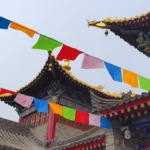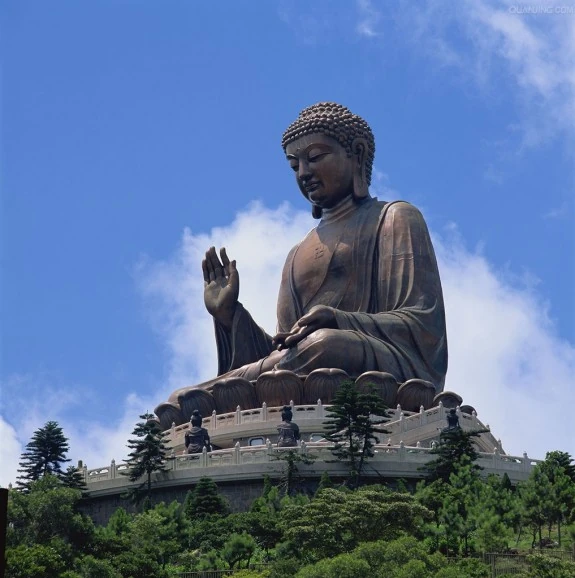If you find yourself searching for a calm escape from the fast pace of Hong Kong’s cityscape, the Tian Tan Buddha offers a serene and profound experience. Known also as the Big Buddha, this massive bronze statue sits peacefully on Lantau Island, drawing visitors who seek spiritual calm, stunning views, and a glimpse of Hong Kong’s culture and history. Close to the statue, you will find places to stay, traditional local eateries, and easy transport links from the city center, airport, and railway stations, making your visit both convenient and memorable.
Table of Contents
How to Reach Tian Tan Buddha from Hong Kong City
Getting to the Big Buddha is part of the adventure, as it takes you out of the urban noise to a peaceful natural setting. The most popular way is to take the MTR to Tung Chung Station on the Tung Chung Line. From there, you can board the Ngong Ping 360 cable car – a scenic ride that climbs over hills and gives panoramic views of the water and mountains.
If the cable car is not your preference, there are public buses (number 23) that travel from Tung Chung to Ngong Ping, where the Buddha sits. Visitors arriving at the airport can take the Airport Express to Tung Chung Station smoothly. For those using private transport or taxis, just ask for “Ngong Ping” or “Tian Tan Buddha” on Lantau Island.
Unveiling the Story of Tian Tan Buddha’s History and Meaning
Standing at about 34 meters tall and weighing over 250 metric tons, the Tian Tan Buddha was completed in 1993. Its name “Tian Tan” refers to the Temple of Heaven in Beijing, as its base is modeled after that famous altar. The statue represents the harmonious relationship between man and nature, people and faith. The Buddha’s right hand is raised in a gesture of blessing, and the left hand rests on his lap, symbolizing peace.
Nearby, the Po Lin Monastery dates back to 1906 and serves as a spiritual home for many Buddhists. The whole area is a place for meditation, prayers, and festivals, especially during Buddha’s birthday. The construction of the statue involved both traditional artisanship and modern engineering, combining ancient symbols with modern bronze casting techniques.
The Best Timing and Quiet Days to Visit Tian Tan Buddha
To enjoy a smooth and peaceful visit, try to pick weekdays, especially in the early morning or late afternoon. Weekends and public holidays see much larger crowds, which can lessen the calm atmosphere. Early mornings are perfect for catching soft light and fewer tourists, allowing some quiet moments at the Buddha’s feet.
Visiting during the cooler months (October to March) is more comfortable, as summers can be hot and humid. If you want to join in on local celebrations, the Buddha’s birthday usually falls in May, but note that crowds can be large, and booking ahead is recommended.
Booking Tours and Entrance Details for Your Trip
Tian Tan Buddha and Po Lin Monastery do not require an entrance fee, making them accessible to all visitors. However, if you prefer guided tours, many companies offer half-day tours from the city, including transport and explanations about the statue’s history and local customs.
For the Ngong Ping 360 cable car, it is best to buy your tickets online in advance, especially during weekends and holidays, to avoid long lines. The cable car also offers a “crystal cabin” option with a glass bottom, which is popular but requires prior reservation.
Nearby Accommodation and Local Food to Taste
Accommodation near Tian Tan Buddha ranges from guesthouses to comfortable lodges, giving you a chance to stay close to nature. These places offer an escape from the city’s fast pace and provide easy access to the statue and the monastery.
After visiting the peaceful Tian Tan Buddha, you can return to the city’s vibrant heart and enjoy the unforgettable sights and flavors in Hong Kong City, where traditional markets and modern life blend.
Food lovers will enjoy trying traditional vegetarian meals at the Po Lin Monastery’s restaurant or sampling local delicacies nearby, such as freshly made dim sum or seafood at the villages near the shore. Don’t miss the chance to sip a cup of tea while soaking in the mountain views.
Hidden Details You Might Miss at Tian Tan Buddha
While many focus on the massive Buddha statue, fewer visitors notice the six smaller bronze statues called The Six Devas surrounding it. These figures hold offerings of flowers, incense, lamp, ointment, fruit, and music to the Buddha, symbolizing generosity, morality, patience, zeal, meditation, and wisdom.
Climbing the 268 steps to reach the statue is a memorable experience itself. Along the way, you might spot playful monkeys. Local stories say monkeys on Lantau Island are considered lucky but remember to respect their space and not feed them.
Useful Official Website for Planning Your Visit
For up-to-date information on ticketing, opening hours, and tour options, you can visit the Ngong Ping 360 official website. This site is well designed and full of resources about the cable car, village activities, and nearby cultural attractions.

A Chinese tour guide with deep knowledge of the Far East, its traditions, and culinary secrets.
- Big-Buddha by Kitakitzcom on Wikimedia Commons – cc by-sa 4.0
